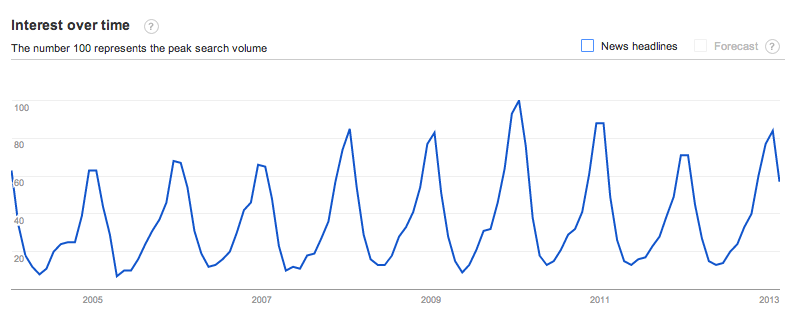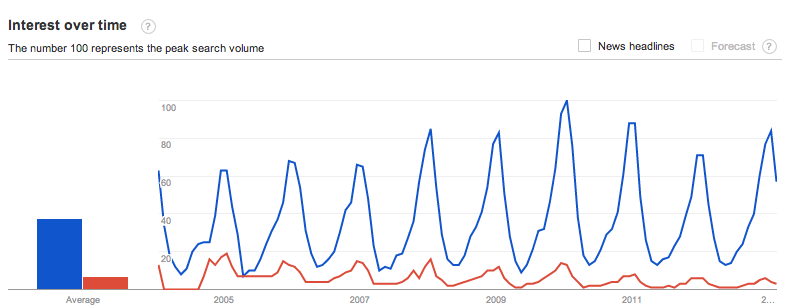All this keyword research is great but what if we could get a sense of how keywords perform over time? Are there any predictable patterns around seasonality? For example, how does a phrase like “best ski resort” change over the course of a year?
Such knowledge can be particularly helpful for running paid search campaigns (more on that later) or planning an editorial calendar for blogging for maximizing our chances of showing up in the Search Engine Results Pages (SERP’s).
Enter Google Trends – this gives us a glimpse of how keywords perform over time – often several years back (an eternity on the web). In addition, the tool provides us with information around geography and related terms.
For the phrase: “Best Ski Resorts”
We quickly see that there is indeed a peak and valley around this phrase – no big surprise of course.
The power of the tool comes in for assessing keyword phrases over each other for getting a quick sense of volume.
Adding in a second phrase like “Ski Resort Vacations” as the red line we see:
Same cyclical nature but the search volume is several magnitudes different.
The tool goes on to give us clues around various other keyword phrases. We can add these into our Keyword Ideas spreadsheet that we’ve been building and even cross-check these phrases using the AdWords Keyword Tool. This also provides us clues into what our consumer are interested in as they perform their Zero Moment of Truth (ZMOT) research.
A Measure of Market Demand?
Using Google Trends you can also extrapolate out around if there is truly a market opportunity for your business service or product. If the search volume is declining down and to the right for a variety of phrases around your offering you know that people are searching less for this topic. There can be a host of reasons for this but it might be time to stop and rethink if you truly have momentum.
At the same time when you identify phrases that differ dramatically in volume and are trending up and to the right over time you can zero in on topics that are worth creating content around because there is proof of a market demand.
What a powerful tool and you can read more on how to use it here.
Leveraging your newly formed SEO skills, you can start to pull in traffic for those searches.
But the decision-maker will inevitably ask, “Great, but how do we stack up against our competitors?”


